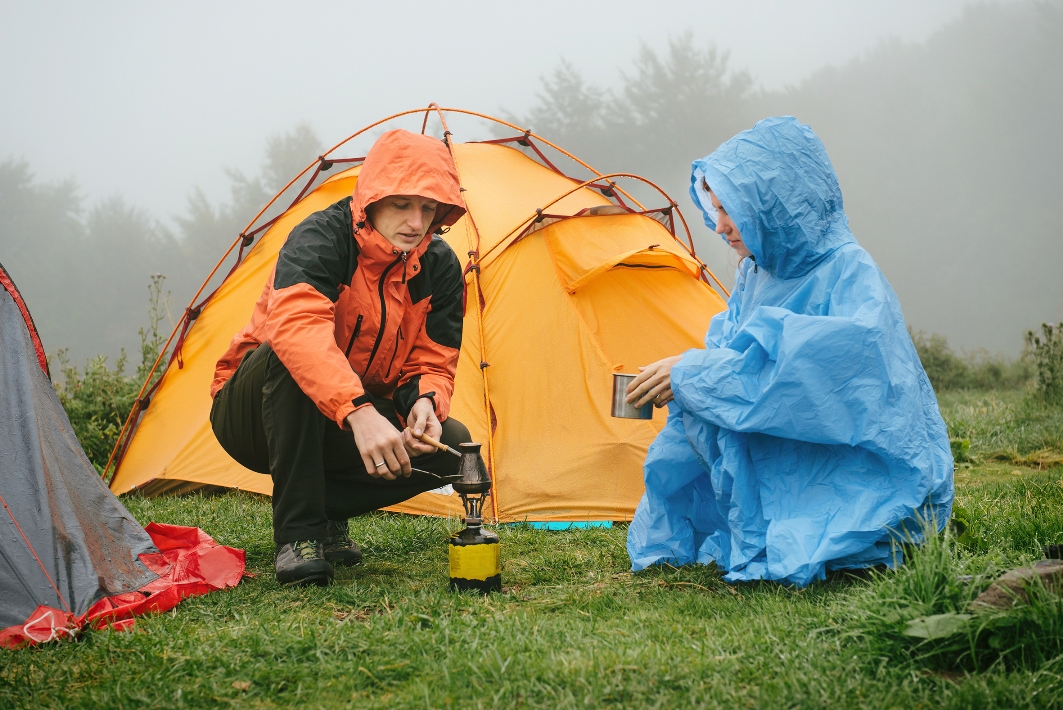Tips for camping in wet and windy weather
How to avoid a camping disaster in dodgy great British weather, from the experts at The Scouts Association.
"I love the great outdoors," someone once said, "except when it rains, in which case it's just the outdoors." Well believe it or not, it is still possible to have a great camping experience even in the wind and rain. You can't choose your weather, but you can certainly prepare for it.
1. Be prepared
Choose your equipment carefully. A cheap tent will not feel so much of a bargain on a windy Scottish hillside with broken poles and no shelter for miles. Most tents are designed to withstand a certain amount of wind, however speeds over 30 mph can cause damage. Remember to take rain ponchos and lots of plastic bags. Pack your clothing and bedding in plastic bags before packing into rucksacks. A change of clothes and a pack of cards or a good book for an afternoon or evening indoors are also advised.

2. Wait for the right conditions to pitch
Pitching a tent in wind and rain can be difficult and potentially dangerous. If there is an option, it is always best to wait until the conditions improve, so keep an eye on the weather forecast and check the rainfall forecast and UK wind map. Remember the tent has no aerodynamic qualities until it is fully pitched. Only you can make a proper assessment of the risks, however be especially mindful of overhanging or rotten branches which could fall in high winds.
Pitch your tent on high ground so rain will not run down into it. If you absolutely have to pitch your tent in the rain, set up a tarpaulin over your tent and work beneath it. Keep clothes bags and equipment away from the sides of the tent; if anything is touching the walls of the tent, water will seep in. Make sure your groundsheet is kept well inside the tent and that the lip is not sticking out, which will collect rain.
Rain can make your tent sag, so you may need to tighten the guy-lines (the ropes securing your tent to the ground) at intervals. Empty any excess water which has gathered on your tent to relieve weight. Also remember that that ground will be softer during and after rain, which may mean that pegs will start to work loose. Check these are secure before turning in.
3. Be aware of the signs of weather
Learning about clouds can help you to better understand the weather and what you might expect. And you can also get a fair indication of the weather just by taking a deep breath. If the air is very pungent, either with sweet smelling flowers, or with compost like odours as plants release their waste, then wet weather may be on the way. When the air contains more moisture, scents are stronger. Another good tip is to watch the wildlife. Many people say that cows lie down before a thunderstorm. They also tend to huddle together before bad weather. You will also notice fewer seagulls in the sky at the coast if a storm is on the way.
4. Know what to do in a thunderstorm
If a thunderstorm hits, outdoors seek shelter immediately - ideally in a house or other permanent structure, but otherwise in a car. A shed or tent is not safe enough and do not shelter beneath a tree. If there really is no shelter at all, find a low place and assume the crash position, with your head between your legs, crouching down and balancing on your heels to avoid too much contact with the earth. Do not use an umbrella or a mobile phone or shelter beneath a tree. It is also important not to leave your shelter too early - there is still a danger up to half an hour after the thunderstorm is over, and yes, lightning can strike the same place, or the same person, twice.
Relax, enjoy the experience, and wait it out
Ultimately, there's no point getting worked up about bad weather while camping; it's just a case of waiting it out. The Scouts call rain 'scouting sunshine' and as Henry Longfellow once said: "The best thing one can do when it's raining is to let it rain."
Scouting gives young people skills for life. Find out more at www.scouts.org.uk/join





